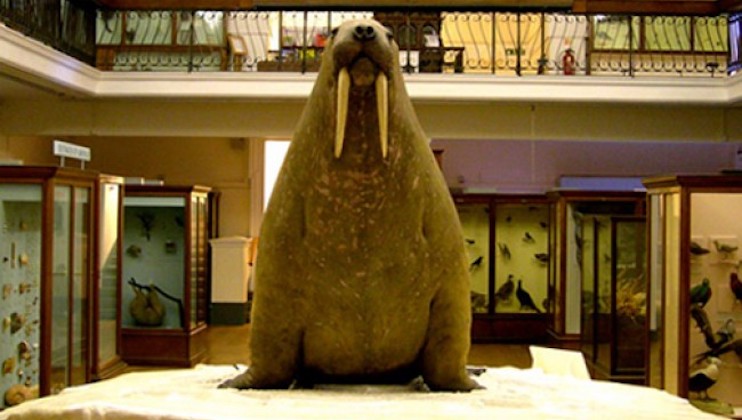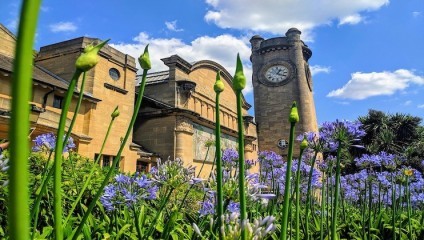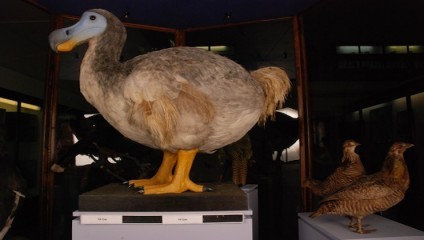Discover London: The Horniman Museum
We take a look at the Horniman Museum and Gardens, one of London's most eclectic and fascinating little-known gems....

The Horniman Museum and Gardens isn't just any museum; it's a whimsical fusion of anthropological marvels, musical harmonies, and natural splendor spread across 16 acres of landscaped gardens. As if plucked from a storybook, this treasure trove of eclectic exhibits, including an acclaimed aquarium and a fluttering butterfly house, invites visitors to embark on a journey through time and culture. From its Victorian roots to being crowned the Art Fund Museum of the Year in 2022, the Horniman has evolved into a delightful place of exploration and enchantment. Unlike conventional museums, here, you can touch, try on, and even play with the artifacts, forging a tangible connection with history and heritage...
Established in 1901 by the enterprising tea trader Frederick John Horniman, the namesake museum began as a personal assemblage of curiosities, garnered from his global escapades dating back to 1860. With a lofty ambition to "bring the world to Forest Hill," Horniman sought to enlighten and engage the local populace. Today, this repository boasts a staggering collection exceeding 350,000 items, drawing hordes of visitors annually keen to immerse themselves in the tapestry of cultures and the oddities that adorn its halls.
Stepping into the main Natural History gallery is akin to entering a menagerie of wonders, where floor-to-ceiling cabinets house a menagerie of taxidermied creatures and specimens sourced from far-flung corners of the globe. From the enigmatic duck-billed platypus to the majestic Bornean orangutan and the endearing Atlantic puffins, the Horniman's natural history trove is a testament to diversity and peculiarity. Yet, amidst this cornucopia, one figure reigns supreme – the infamous Horniman Walrus (rest assured, it's not Walter as previously speculated). This colossus, inflated to gargantuan proportions by bemused Victorian taxidermists who mistook its natural wrinkles for imperfections, has held court in the gallery for over a century. Adorning a faux iceberg since the 1980s, this smooth-skinned behemoth now commands attention not only as a museum centerpiece but also as a social media sensation, boasting his own Twitter presence and serving as the charismatic face of the institution. Indeed, the Horniman Walrus is a creature of unparalleled charm and fascination.

Tucked away within the Natural History gallery lies a cherished rarity: the renowned dodo bird exhibit. Contrary to popular belief, as elucidated by Jo Hatton, the museum's Keeper of Natural History, the dodo gracing the entrance isn't a preserved relic but a meticulously crafted model. With the last living dodo sighting dating back to the 1680s, these lifelike representations offer the closest glimpse into the bygone avian species. Crafted by the esteemed taxidermy firm Rowland Ward and unveiled at the museum in 1938, this masterful replica features plaster-cast feet and head, adorned with a plumage of chicken and goose feathers, complemented by actual chicken wings, rendering it deceptively authentic at first glance.
What distinguishes the Horniman is its juxtaposition of an extensive collection within a modestly sized museum—a manageable feat for a single-day excursion, unlike its larger counterparts. Furthermore, the inclusion of a dedicated aquarium, boasting fifteen distinct exhibits showcasing aquatic ecosystems spanning from the British coastlines to the Fijian coral reefs, elevates its allure beyond that of a traditional collections museum.
Moreover, the Horniman's distinction extends to the harmonious interplay between its indoor exhibitions and outdoor garden displays, fostering a seamless connection between interior and exterior realms. Wesley Shaw, the Head of Horticulture at the Horniman Gardens, elucidates on this synergy, citing the garden's 2012 redevelopment, which introduced thematic spaces such as the dye, medicinal, materials, and food gardens, intricately linked to the museum's collections through interpretive elements. Notably, botanical specimens found in the garden echo those utilized in crafting musical instruments showcased in the Music Gallery, while vegetables cultivated onsite find purpose in the museum café's culinary offerings. This symbiotic relationship underscores the Horniman's commitment to holistic engagement, bridging the gap between nature, culture, and heritage with seamless finesse.

The Gardens, a verdant sanctuary perched atop Forrest Hill, enchant visitors with their beauty, rivaling the eclectic allure of the museum's indoor collections. Elevated to offer a panoramic vista of London's skyline, these gardens beckon explorers to immerse themselves in a world of natural wonder. Embark on an enchanting animal walk, where encounters with charming alpacas Poppy and Peep, alongside a menagerie of goats, sheep, guinea pigs, rabbits, and chickens, promise delightful interactions. Following these furry rendezvous, meander along the serene Nature trail or engage your senses in the interactive Sound Garden. For those seeking tranquil respite, the sunken garden provides a haven of tranquility amidst the splendid surroundings.
At the heart of the Horniman Museum and Gardens lies a noble mission: to leverage its global collections and lush landscapes to foster a deeper appreciation for the world, its diverse peoples, and their rich cultures. Through a commitment to education and enlightenment, the institution endeavors to unite individuals in the pursuit of discovery and learning. With a calendar brimming with captivating events and workshops year-round, a visit to the Horniman promises not only to captivate but also to enlighten, offering a firsthand encounter with the marvels of our peculiar yet remarkable world.
